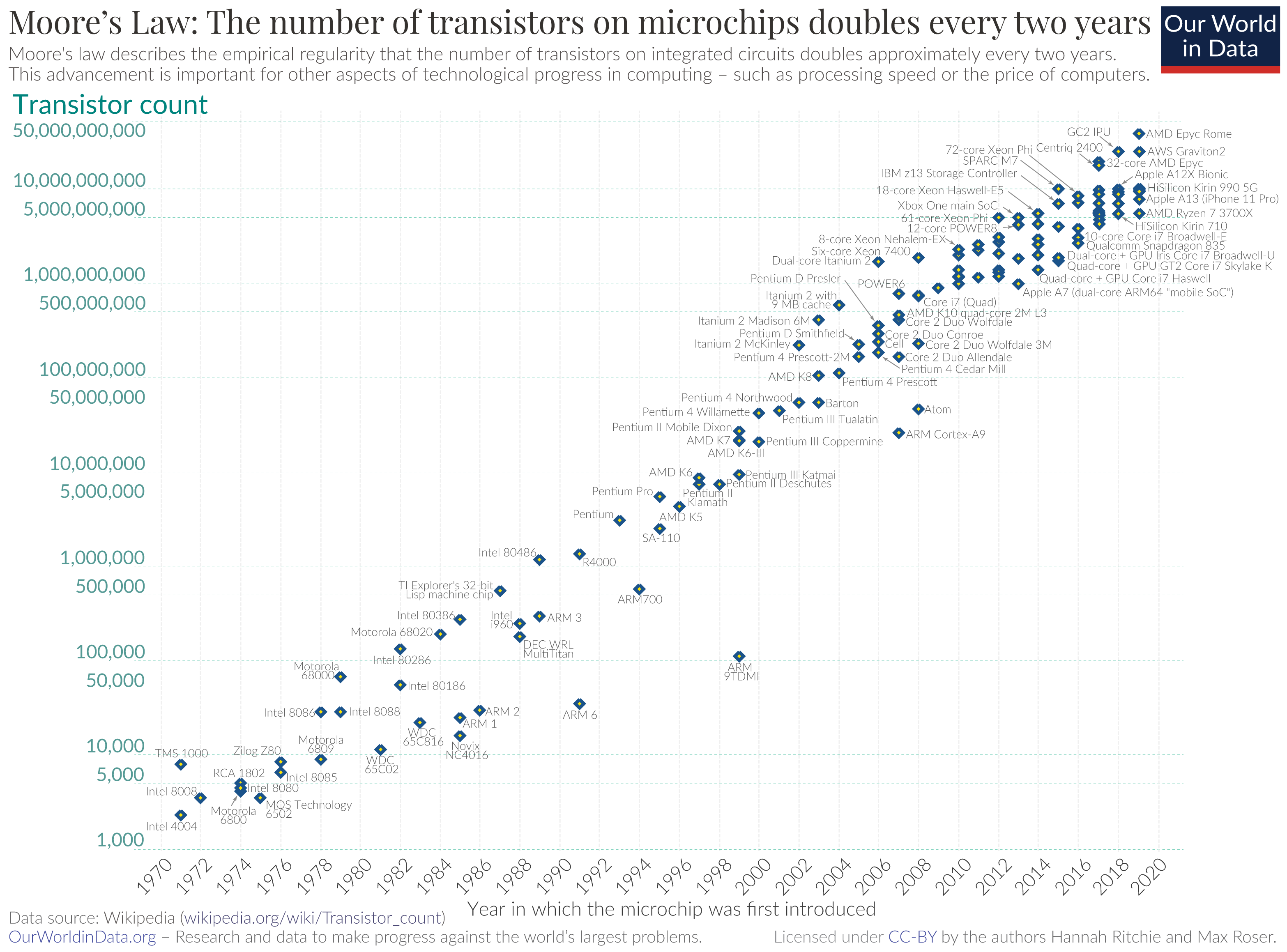Moore’s law is the observation that the number of transistors in a microchip doubles every two years. Computer companies have been racing to achieve this feat, and succeeding. CPUs and GPUs with transistor counts over 1 billion are common.

Aside from the incredible engineering problems in fabricating these chips, (take ECE 120AB if you want to learn about fabrication,) how do you create a design to take advantage of that many transistors?
You can use transistors to create a set of components that are functionally complete, meaning they can be used to solve any boolean expression. Examples of components include
To implement any boolean expression, you will need to use combinational logic. Combinational logic is a type of digital logic that is run independent of clock pulses. For example:
To change the value of registers on clock edges, you will need to use flip flops. Combinational logic is inputted to a flip flop, then is saved once it receives a clock pulse. You can configure a flip flop to activate either on a positive clock edge ↱ or negative clock edge ↳.